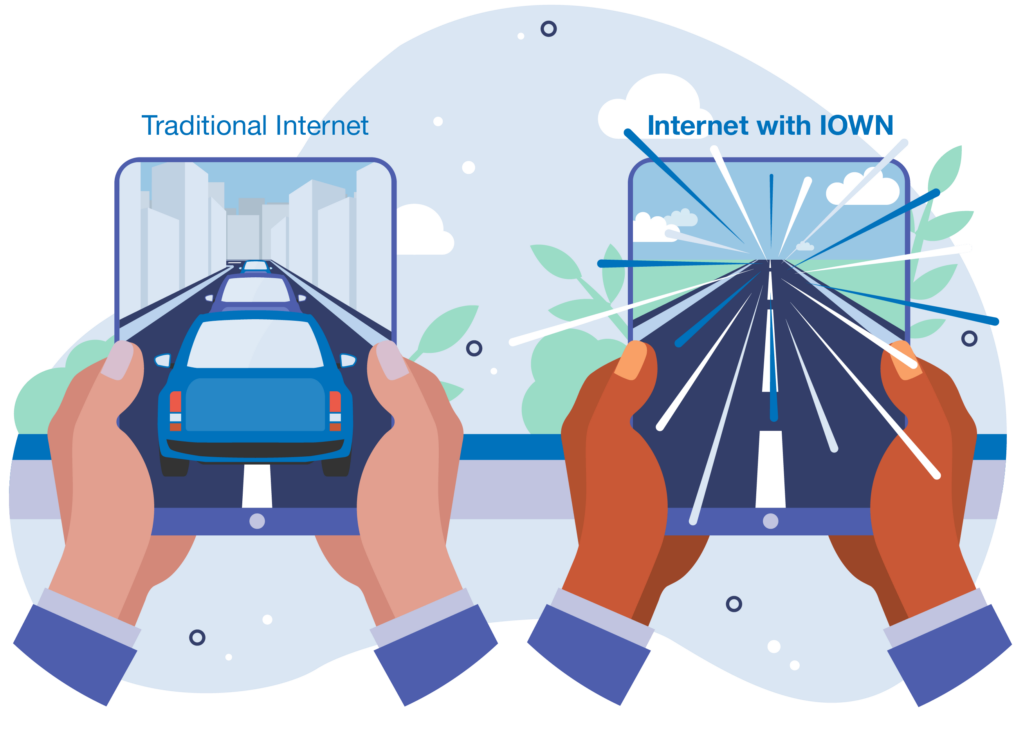Networks are changing.
As we draw to the end of a computing era defined by Moore’s Law and the proposition that processing power can continue doubling (roughly every 18-months) due to advances in silicon wafer technologies, organizations have been working to establish new protocols, processes and practices to draw more juice out of our existing computing substrate through parallelism, concurrency and the use of Graphical Processing Units (GPUs).
Looking to lay down foundations that could defined how we use machines for decades to come is NTT Corporation (NTT) with its All Photonic Network (APN) approach, one of three central technologies that form its Innovative Optical & Wireless Network (IOWN) concept – the other two being its cognitive foundation approach (described as the optimal harmonisation of all ICT resources) and its work in digital twin computing.
An inclusive core
Now working to build out the technical specifications for what the company calls a core network ‘inclusive core’ architecture for the 6G/IOWN era, NTT has conducted demonstration experiments using the Metaverse as a use case to confirm its effectiveness.
“The inclusive core will significantly change the role of core networks by incorporating technology concepts such as InNetwork Computing and Self-Sovereign Identity (SSI), which are expected to be widely used in the future, into the core network. This enables users to have a comfortable and secure experience by reducing terminal processing load and protecting user privacy for services used over the network,” notes NTT in a technical product statement.
The work carried out here was witnessed by ERP Today at the NTT R&D Forum, held in Tokyo this November 14th to 17th, 2023.
Future network diversity
In the future, NTT says that network services will become more diverse and advanced with technologies such as CPS (see directly below) coming to the fore in the 6G/IOWN era.
Cyber-Physical System (CPS) refers to a system that blends the physical world (physical) with the digital world (cyber) and these systems combine sensors, actuators, data processing and communication technologies to collect, analyze and control information in real time. CPS is expected to be used in many applications such as autonomous vehicles, smart cities, and industrial robots.
“Traditional networks have transferred information independently of information processing in cloud services and on terminals. While the information processing of various services is advanced in cloud services and terminals, the network configuration has not been agile and limited its features only to data transfer, which can cause restrictions for the area of advanced services and terminals. In addition, while digitized personal information (digital identity) is becoming more prevalent and is expected to be used in advanced services, the digitization of such personal information raises concerns about unintended collection of personal information, identification of individuals through collation of collected information and abuse of personal information,” heeds NTT, in a white paper detailing work on this topic.
The inclusive core aims to become a common foundation for the future, consisting of various technologies that realize the four multifaceted integration and cooperation principles as communication services themselves.
Future robust networks
Looking at other technologies coming to the fore in this area, NTT also highlights “In-network Service Acceleration Platform (ISAP)” – this highly resilient network technology has some penetrating and diverse use cases. As an In-Network Computing enabling technology, ISAP mediates information processing related to services on terminals and in cloud services and forms what is known as a ‘cascading computing environment’ on hardware in the network that is suited to the communication environment and the service usage environment.
As deep-level as many of the NTT technologies on show here are, their upper-level use cases will be felt by all individuals using the common tools that we now associate with the web. As the company is fond of saying, if you’ve used the Internet, then you’ve used NTT servers – this is base level substrate layer technology that we all come into contact with.




